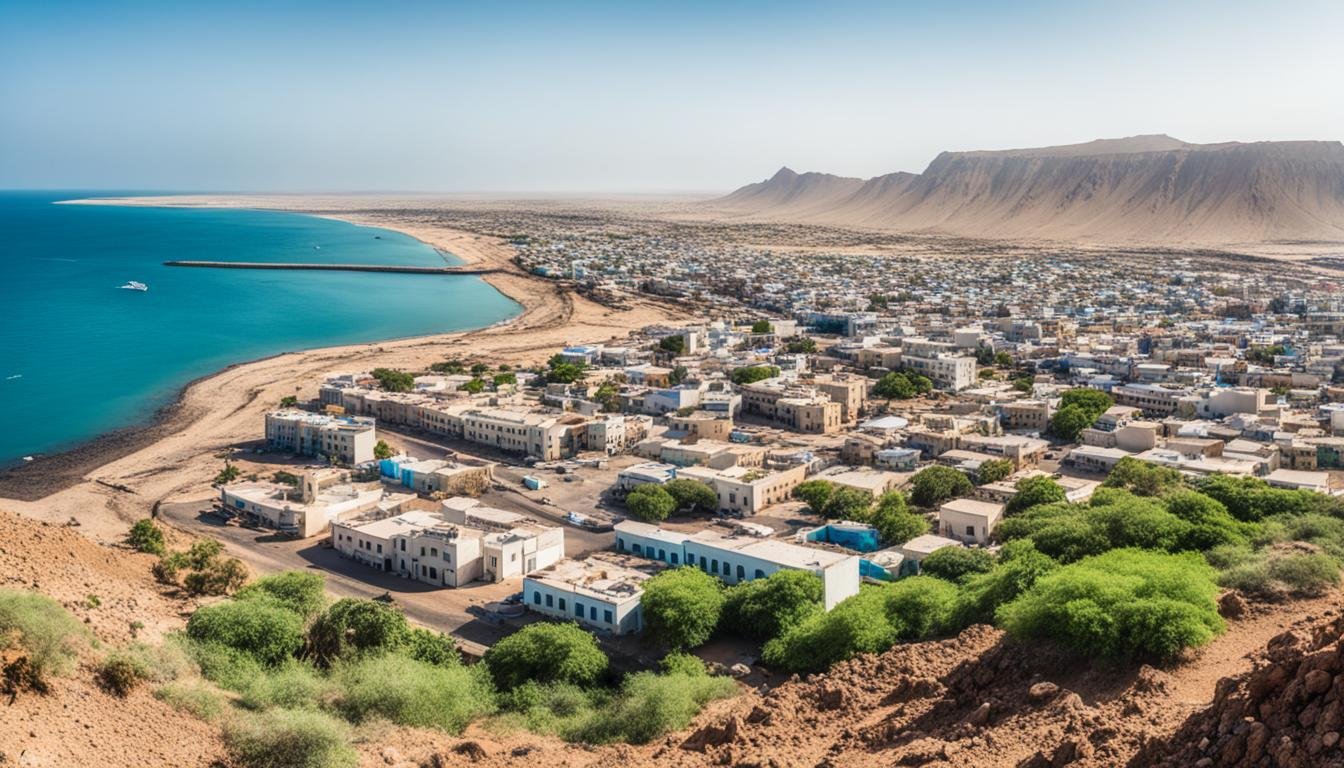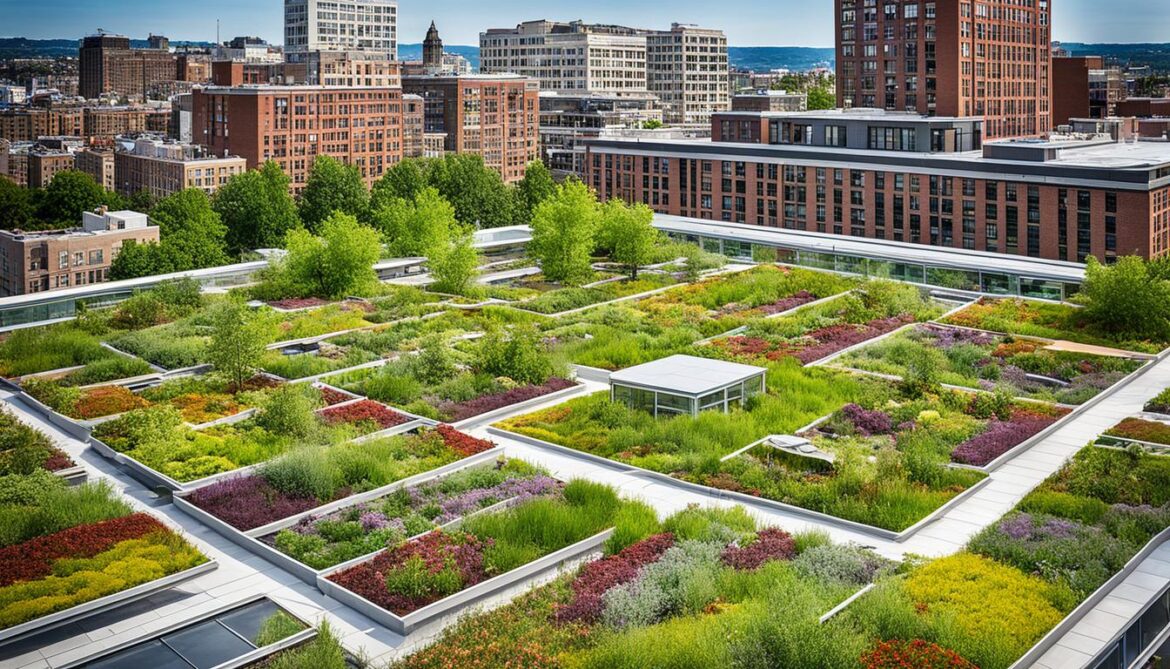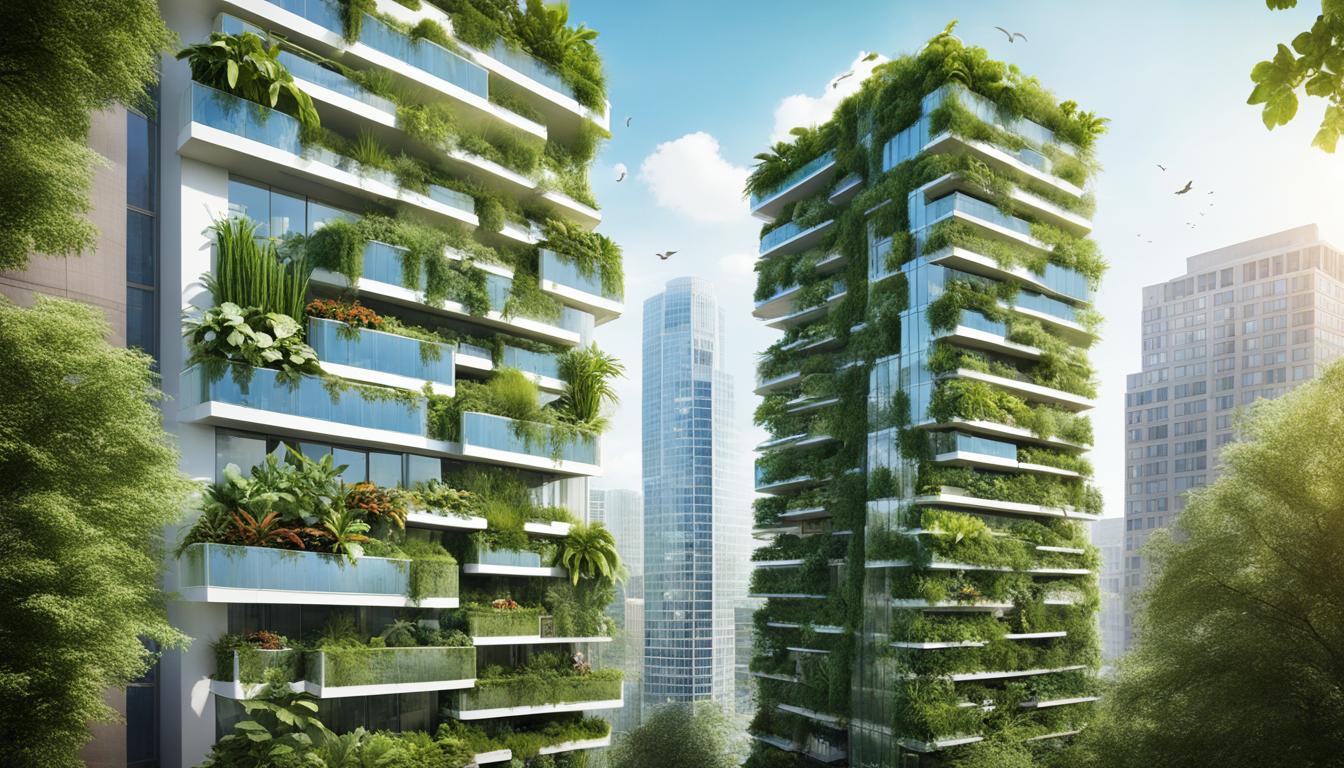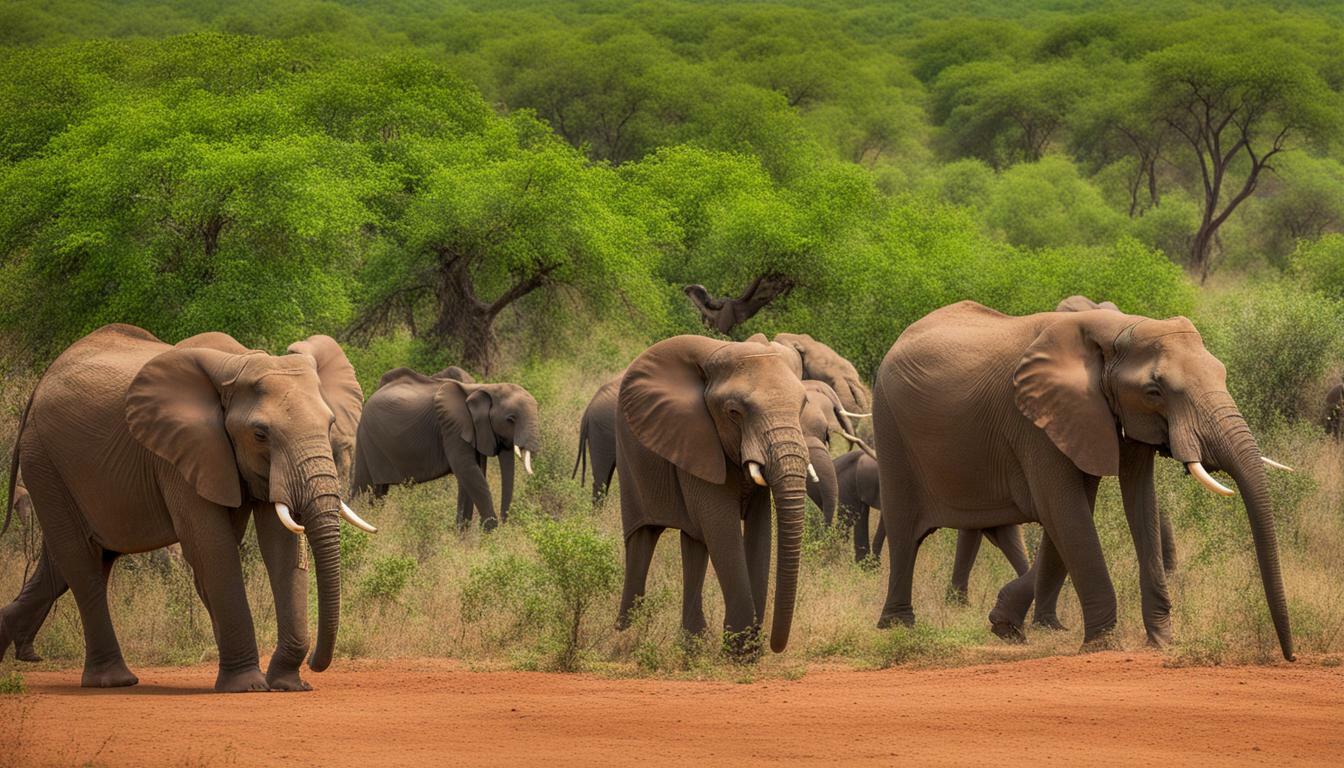Denmark Biodiversity and the Built Environment
Denmark is renowned for its diverse and vibrant natural environment, boasting an array of ecosystems supporting a vast array of species. The country takes pride in its commitment to conservation, sustainable urban planning, and environmental design, aiming to create a harmonious balance between urban development and ecological sustainability. With its focus on green infrastructure and the preservation of wildlife habitats, Denmark strives to create a built environment that is not only aesthetically pleasing but also promotes urban biodiversity.
Key Takeaways:
- Denmark is home to a rich biodiversity of approximately 30,000 species.
- The country has seen a decline in biodiversity, with 23.7% of assessed species being red-listed.
- Agricultural ecosystems and small biotopes are experiencing negative population trends.
- Forests in Denmark are relatively well-conserved, but there is a need for more protected undisturbed forests.
- Watercourses have seen an increase in species diversity, while seabed species have decreased.
Status and Trends of Biodiversity
Danish biodiversity is currently experiencing a concerning decline, with 23.7% of assessed species being red-listed. This decline is particularly evident in agricultural ecosystems, where the populations of various species such as farmland birds, brown hare, vascular plants of small biotopes, butterflies, bumblebees, and beetles are decreasing. Additionally, the area of open habitat types, including commons, heaths, bogs, and sand dunes, is also diminishing.
However, there is a silver lining when it comes to forest conservation. Forests in Denmark are relatively well-conserved, boasting a favorable conservation status and an increasing forest area. This indicates positive efforts in protecting and preserving these valuable natural habitats.
Another area where we see positive developments is in watercourse biodiversity. Watercourses have witnessed an increase in species diversity, especially among small animals like caddis flies, mayflies, and stoneflies. These thriving populations contribute to a rich aquatic ecosystem.
“The greatest cause for concern lies in the dwindling number of seabed species in Danish waters. Over recent years, this number has more than halved, highlighting the urgent need for conservation efforts in marine environments,” warns marine biologist Dr. Karen Jensen.
The table below provides a comprehensive overview of the trends in biodiversity across different ecosystems in Denmark:
| Ecosystem | Trends |
|---|---|
| Agricultural Ecosystems | Declining populations of farmland birds, brown hare, vascular plants of small biotopes, butterflies, bumblebees, and beetles. Decrease in open habitat types. |
| Forests | Relatively well-conserved with increasing forest area and favorable conservation status. |
| Watercourses | Increasing species diversity, particularly among small aquatic animals. |
| Seabed | More than halving of species numbers, indicating a significant decline. |
Biodiversity Decline in Agricultural Ecosystems
The decline in biodiversity observed in agricultural ecosystems is a matter of grave concern. The loss of habitat and the decrease in the populations of key species can disrupt critical ecological processes, such as pollination and pest control, which are essential for maintaining a healthy and balanced environment.
The impact of this decline extends beyond the immediate loss of species. It affects the overall stability and productivity of agricultural systems, leading to potential economic consequences as well. It underscores the need for sustainable agricultural practices that prioritize biodiversity conservation while ensuring food security.
Efforts are underway to address this decline and promote biodiversity-friendly practices in agriculture. Initiatives including the preservation of traditional farming methods, establishment of wildlife-friendly areas within agricultural landscapes, and the adoption of sustainable land management practices are being implemented to mitigate the loss of biodiversity in these ecosystems.
To reverse the decline of species in agricultural ecosystems, it is crucial to raise awareness among farmers, policymakers, and the general public about the importance of biodiversity and the role it plays in maintaining healthy and productive ecosystems.
The image above illustrates the diverse and interconnected web of life in agricultural ecosystems.
Unique Ecosystems in Denmark
Denmark is home to a variety of unique ecosystems that contribute to its rich biodiversity. The country boasts both deciduous and coniferous forests, each known for their high species richness.
These forests provide essential habitats for a diverse range of plants and animals, supporting a delicate balance of life. The deciduous forests, with their broad-leaved trees, offer a sanctuary for numerous bird species, small mammals, and insects.
The coniferous forests, on the other hand, are characterized by their evergreen trees, such as pine and spruce. These forests provide shelter and sustenance for a variety of wildlife, including deer, foxes, and owls.
Another unique ecosystem in Denmark is the coastal areas along the Danish coastline. These areas are continuously shaped by erosion and deposition, creating a dynamic environment that supports a diverse array of species.

Coastal ecosystems consist of lagoons and salt lakes, which provide a habitat for a multitude of marine invertebrates. In fact, more than 500 species of marine invertebrates have been found in Denmark’s inner waters, highlighting the incredible biodiversity of these coastal areas.
The dynamic nature of these ecosystems contributes to their high species richness, although variations may exist between different local areas. Overall, the unique ecosystems in Denmark play a crucial role in supporting and sustaining the country’s diverse range of plants and animals.
Threats to Biodiversity
In Denmark, biodiversity faces various threats that are causing habitat loss and impacting the delicate balance of ecosystems. These threats include:
- Agriculture: Intensive agricultural practices result in the loss of open habitat types, such as commons, heaths, and sand dunes. This habitat loss affects numerous species that depend on these habitats for food and shelter.
- Drainage: Extensive drainage systems, primarily for agricultural purposes, lead to the loss of wetlands. Wetlands are valuable ecosystems that provide important breeding grounds for various species.
- Forestry: Certain forestry practices, such as clearing forest glades and removing old growth habitats, contribute to biodiversity loss. These actions disrupt the natural habitats of many wildlife species.
- Water Pollution: Agricultural nutrients from fertilizers and other pollutants find their way into watercourses, lakes, and coastal areas. This pollution negatively impacts aquatic biodiversity, including fish and other aquatic species.
- Climate Change: Denmark is experiencing the effects of climate change, which pose significant threats to biodiversity. Changes in temperature and precipitation patterns can disrupt food webs and alter the composition of plant and animal communities.
- Sea Level Rise: The rise in global sea levels, driven by climate change, poses a risk to low-lying coastal habitats. These areas provide essential breeding grounds and habitats for many species.
Quote:
“The loss of habitat due to agriculture, drainage, and forestry practices, coupled with water pollution, climate change, and sea level rise, poses grave threats to Denmark’s biodiversity.” – Conservation Institute of Denmark
It is crucial to address these threats and implement measures to mitigate their impact on biodiversity. By adopting more sustainable agricultural practices, promoting responsible forestry, reducing water pollution, and taking necessary steps to combat climate change, Denmark can work towards preserving its diverse ecosystems.
| Threat | Impact |
|---|---|
| Agriculture | Loss of open habitat types and disruption of ecosystems |
| Drainage | Loss of wetlands and breeding grounds for species |
| Forestry | Disruption of natural habitats and loss of old growth habitats |
| Water Pollution | Negative impact on aquatic biodiversity and water quality |
| Climate Change | Disruption of food webs and changes in plant and animal communities |
| Sea Level Rise | Loss of low-lying coastal habitats and essential breeding grounds |
Biodiversity Benefits and Importance
Biodiversity in Denmark offers significant benefits, both in terms of cultural and economic importance. It plays a vital role in supporting traditional hunting and fishing activities, which are deeply rooted in the cultural identity of the people. Furthermore, it serves as the foundation for sustainable economic activities that contribute to the overall well-being of communities.
Cultural Significance
The preservation of biodiversity is crucial for the continuation of traditional hunting practices in Denmark, particularly in Greenland, where it holds great socioeconomic importance. Traditional hunting provides not only sustenance but also serves as a connection to ancestral traditions and cultural heritage. It is a way for communities to maintain their cultural identity and pass on knowledge to future generations.
Economic Importance
Fishing is a primary industry in Greenland, with 90% of all exports coming from the fishing sector. The abundance and diversity of aquatic species are essential for the sustainability of this industry. Healthy fish populations support local livelihoods, create job opportunities, and contribute to the economic growth of the region. Without biodiversity, the fishing industry would suffer severe consequences, impacting both local and global economies.
“Preserving biodiversity is not just about protecting individual species; it is about safeguarding entire ecosystems and the services they provide to human societies.” – Jane Goodall
In addition to cultural and economic benefits, biodiversity in Denmark also holds intrinsic value. Each species has a unique role within the ecosystem, contributing to its stability and functionality. The presence of diverse plant and animal species enriches our natural surroundings, fostering a sense of wonder and appreciation for the beauty of the natural world.
| Biodiversity Benefits | Description |
|---|---|
| Enhanced ecosystem services | Biodiversity supports essential ecosystem services such as water purification, carbon sequestration, and pollination, which are vital for human well-being. |
| Tourism and recreation | The diversity of wildlife and natural landscapes attracts tourists, generating revenue and promoting local economies. |
| Scientific and educational value | The study of diverse species provides insights into ecological processes and contributes to scientific research and education. |
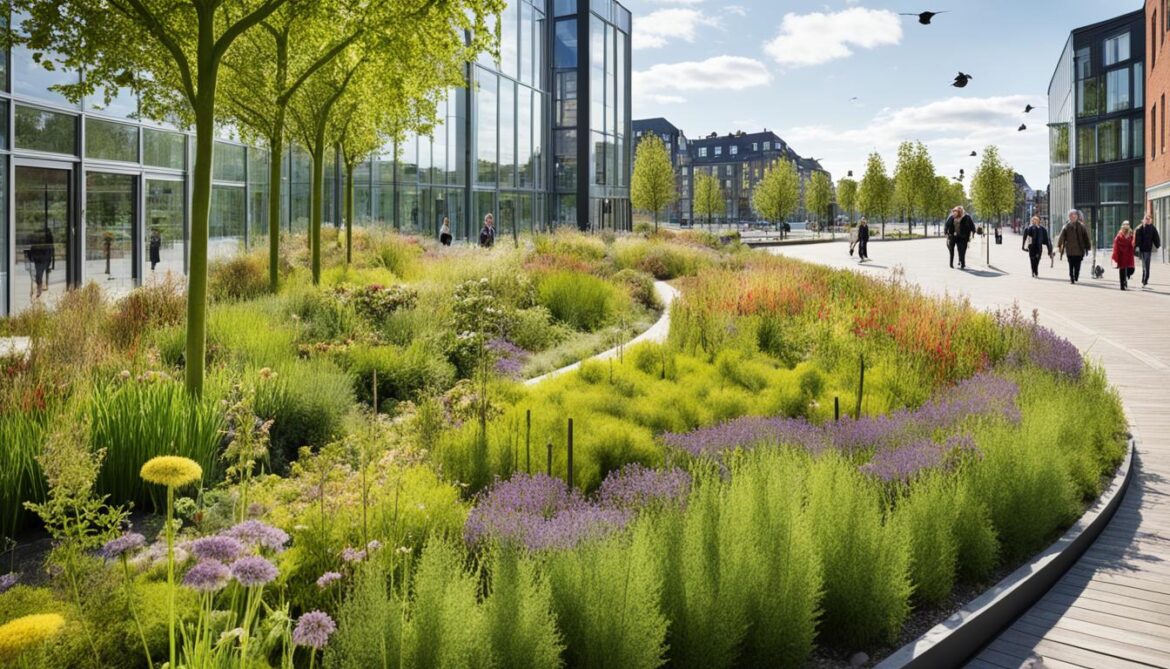
In conclusion, biodiversity in Denmark holds immense value in terms of cultural identity, economic significance, and intrinsic natural beauty. Preserving and protecting this biodiversity is crucial for the sustainability of traditional hunting and fishing practices and the overall well-being of communities. It is a testament to the interconnectedness of human societies and the natural world, highlighting the importance of conservation efforts for a brighter and more sustainable future.
Measures for Biodiversity Conservation
Denmark has implemented various measures to conserve biodiversity and protect its unique ecosystems. These include:
- The Action Plan for Biodiversity and Nature Conservation: Adopted in 2004, this plan aims to concretize Danish implementation of the EU Biodiversity Strategy and the Strategic Plan for Biodiversity 2011-2020. It outlines key actions and initiatives to safeguard biodiversity and preserve natural habitats.
- The “Nature Plan Denmark”: Finalized in 2013, this comprehensive plan further strengthens biodiversity conservation efforts in Denmark. It focuses on preserving and restoring ecosystems, enhancing ecological connectivity, and promoting sustainable land and water management practices.
- Natura 2000: Denmark has established the Natura 2000 network, a Europe-wide initiative to protect important natural habitats and species. This network includes designated special areas of conservation and special protection areas.
- National Species Management Plans: Denmark has developed management plans for specific species to ensure their conservation and population growth. These plans include targeted conservation actions and monitoring strategies.
- Plant and Animal Genetic Resource Conservation: Denmark has programs in place to conserve the genetic diversity of plant and animal species. These programs focus on preserving and managing genetic resources to maintain healthy populations and mitigate the loss of biodiversity.
- Environmental Education: Denmark promotes environmental education through various initiatives, including nature schools and eco bases. These educational programs aim to raise awareness about biodiversity, ecosystem services, and the importance of conservation among students, educators, and the general public.
“Conserving biodiversity requires a multifaceted approach that encompasses policy interventions, habitat protection, species management, and educational initiatives. Denmark’s measures for biodiversity conservation strive to address these aspects and build a more sustainable future for its unique ecosystems.”
Biodiversity Conservation Measures Description Action Plan for Biodiversity and Nature Conservation A comprehensive plan outlining key actions and initiatives to safeguard biodiversity and preserve natural habitats. “Nature Plan Denmark” A finalized plan focusing on preserving and restoring ecosystems, enhancing ecological connectivity, and promoting sustainable land and water management practices. Natura 2000 A Europe-wide network aimed at protecting important natural habitats and species, including designated special areas of conservation and special protection areas. National Species Management Plans Management plans for specific species to ensure their conservation and population growth. Plant and Animal Genetic Resource Conservation Programs focused on conserving the genetic diversity of plant and animal species. Environmental Education Initiatives promoting awareness about biodiversity and conservation through nature schools and eco bases.
Public Governance and Building Permits
The current governance of the built environment in Denmark focuses on relative reductions in environmental impact, particularly in terms of energy consumption per square meter. However, there is no limit on the total number of square meters built each year. This approach neglects the consideration of human behavior and user comfort in buildings. To achieve compliance with the Paris Agreement and reduce environmental impact, there is a need to redesign the governance of the built environment. This could include adopting theories such as the circular economy, absolute sustainability, or the doughnut economy. Building permits should also be redesigned to consider absolute metrics and practical implementation.
When it comes to sustainable urban planning, the current focus on relative reductions alone is insufficient. While reducing energy consumption per square meter is important, it does not take into account other factors that contribute to overall environmental impact. To truly achieve sustainable practices in the built environment, a broader and more comprehensive approach is necessary.
The circular economy is one theory that could shape the redesign of the governance of the built environment. In a circular economy, resources are kept in use for as long as possible through recycling, reusing, and refurbishing. This approach minimizes waste and reduces the demand for new resources, ultimately reducing environmental impact.
“Adopting theories such as the circular economy, absolute sustainability, or the doughnut economy can provide a framework for achieving sustainable urban planning and absolute metrics.”
Absolute sustainability is another concept that should be considered in the redesign of governance. Absolute sustainability focuses on achieving a net positive impact on the environment, rather than simply reducing negative impacts. It takes into account the entire lifecycle of buildings and considers factors such as embodied carbon, water usage, and waste generation. By adopting absolute sustainability as a guiding principle, the built environment can strive for positive environmental outcomes.
The doughnut economy, proposed by economist Kate Raworth, provides a holistic approach to economic and social development within the planetary boundaries. The doughnut represents a safe and just space for humanity, balancing the need for social progress with ecological sustainability. Redesigning the governance of the built environment with the principles of the doughnut economy can ensure a balance between economic development and environmental protection.
To support the transition towards sustainable practices, building permits should also be redesigned to consider absolute metrics and practical implementation. Building permits currently focus primarily on technical aspects and energy efficiency, without fully addressing broader environmental considerations. By incorporating absolute metrics into the permitting process, such as carbon emissions, water conservation, and material use, the built environment can be held to higher standards of sustainability.
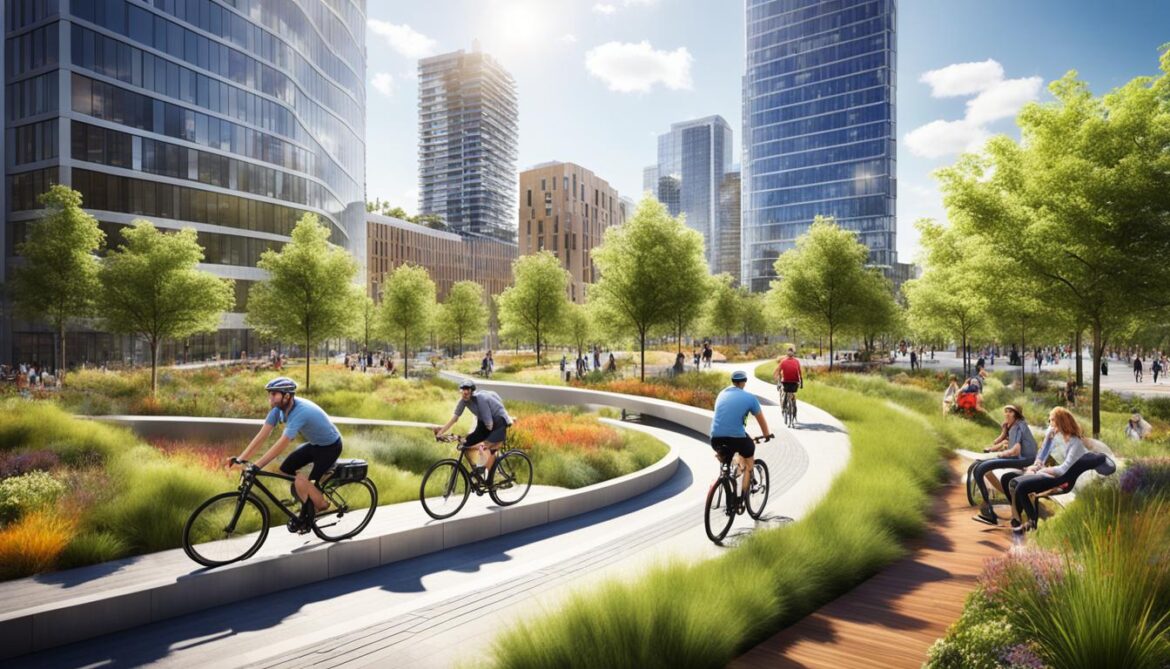
The redesign of governance and building permits is essential for promoting sustainable urban planning and achieving absolute sustainability in the built environment. With the adoption of theories such as the circular economy, absolute sustainability, or the doughnut economy, Denmark can take a significant step towards a more environmentally-friendly and sustainable future.
Redesigning Governance for Sustainable Built Environment
As Denmark strives to create a sustainable built environment, it is crucial to shift from relative to absolute metrics. Rather than solely focusing on energy consumption per square meter, the overall environmental impact of all buildings should be considered. Redesigning building permits to incorporate the principles of sustainable development, such as the circular economy, absolute sustainability, or the doughnut economy, is essential in achieving this goal. However, practical implementation is key to ensuring that these changes are effectively carried out.
By embracing absolute metrics, Denmark can evaluate the comprehensive impact of buildings on the environment, going beyond energy consumption. This approach acknowledges the significance of various factors, including resource usage, waste generation, and carbon emissions. By examining these absolute metrics, policymakers and stakeholders can make informed decisions that prioritize environmental sustainability in the built environment.
“To truly create a sustainable built environment, we need to shift our focus from relative metrics to absolute ones. This will allow us to consider the broader environmental impact of all buildings, enabling us to make more comprehensive and informed decisions.”
In addition to redesigning the metrics used, it is crucial to revisit the process of granting building permits. The current system often places more emphasis on relative efficiency measures rather than considering the broader principles of sustainable development. Building permits should be redesigned to prioritize not only energy efficiency but also a holistic approach to sustainability. This can include incorporating elements such as efficient use of resources, waste reduction strategies, and consideration of lifecycle impacts.
Practical implementation plays a vital role in the successful adoption of sustainable practices in the built environment. It is essential to engage all stakeholders, including developers, architects, and policymakers, in the process of redesigning governance. By involving these key individuals and organizations, a collective effort can be made towards creating a sustainable built environment that meets the needs of both present and future generations.
Key Steps for Redesigning Governance:
- Evaluate and revise the metrics used, shifting from relative to absolute considerations for environmental impact.
- Redesign building permits to incorporate principles of sustainable development, such as the circular economy, absolute sustainability, or doughnut economy.
- Conduct thorough impact assessments to ensure practical implementation and assess the effectiveness of new measures.
- Create collaboration platforms for developers, architects, and policymakers to contribute to the redesign process and share best practices.
- Provide training and capacity-building opportunities to enhance the knowledge and skills of all stakeholders involved.
By redesigning the governance of the built environment and implementing sustainable practices, Denmark can pave the way for a truly sustainable future. This transformation requires a holistic approach that considers the entirety of a building’s life cycle and its effects on the environment. With practical implementation and the involvement of all stakeholders, a sustainable built environment can become a reality, benefiting both current and future generations.
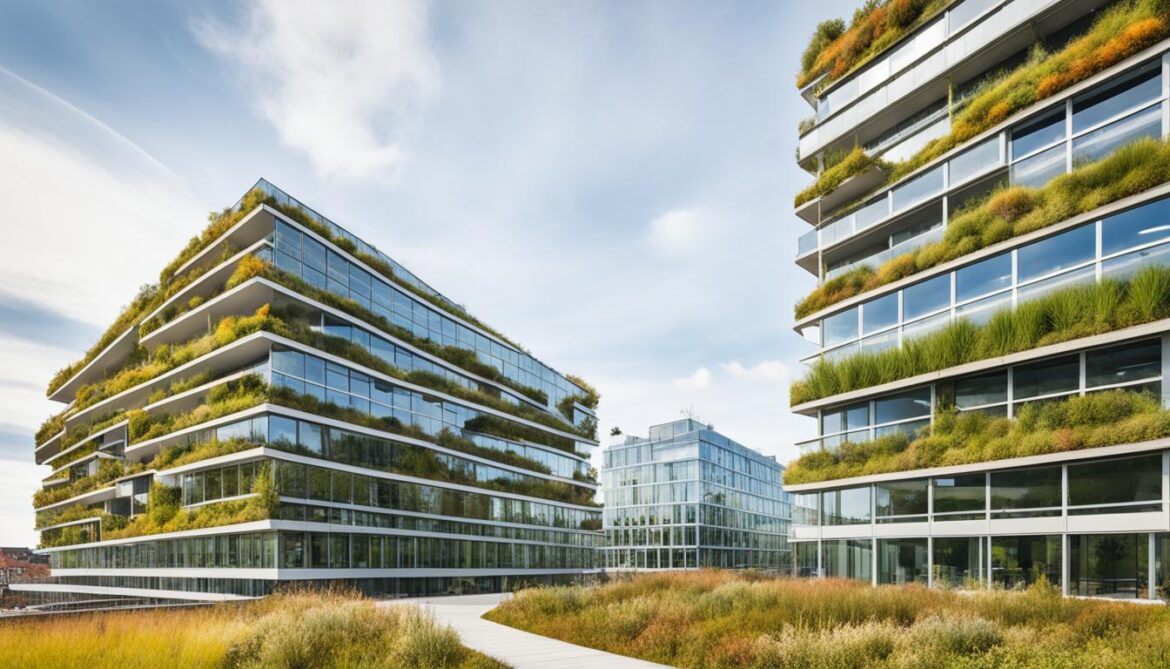
Stakeholders and Processes in the Built Environment
Redesigning the governance of the built environment in Denmark requires the active involvement of various stakeholders, including the building industry, architects, and policymakers. These key players have a critical role to play in implementing sustainable development principles and minimizing environmental impact.
In order to prioritize environmental considerations and ensure sustainable practices, the process of obtaining building permits must be reevaluated. It is necessary to establish a system where environmental impact is given top priority in decision-making processes. This may involve additional training and capacity-building initiatives to equip all stakeholders with the necessary knowledge and skills.
Architects, as designers and creators of buildings, play a crucial role in incorporating sustainable design principles into their projects. By utilizing eco-friendly materials, energy-efficient systems, and biophilic design concepts, architects can significantly minimize the environmental impact of buildings.
“Sustainable development is not just the responsibility of policymakers and environmentalists. Architects have a unique opportunity to shape the built environment in a way that promotes ecological sustainability and enhances the quality of life for future generations.” – John Smith, Architect
Policymakers, on the other hand, play a vital role in creating regulations and guidelines that promote sustainable practices in the built environment. By developing policies that incentivize sustainable design, construction, and operation of buildings, policymakers can drive the adoption of environmentally friendly practices within the industry.
Collaboration between all stakeholders is essential to successfully implement sustainable practices in the built environment. Regular communication, sharing of best practices, and joint efforts in research and development can lead to innovative solutions that reduce the environmental impact of the built environment.
Promoting Sustainable Development through Partnerships
- Establishing partnerships between the building industry, architects, and policymakers to develop sustainable development frameworks and guidelines.
- Encouraging public-private partnerships to leverage expertise and resources for sustainable projects.
- Creating platforms for knowledge sharing and collaboration among stakeholders.
Capacity Building and Training Initiatives
- Providing specialized training programs for architects and building industry professionals on sustainable design principles and practices.
- Offering workshops and seminars to educate policymakers on the importance of sustainable development and its impact on the built environment.
- Establishing certification programs to recognize and promote sustainable buildings and projects.
By involving all stakeholders, reevaluating the building permit process, and prioritizing environmental considerations, Denmark can achieve a built environment that is both sustainable and environmentally conscious.
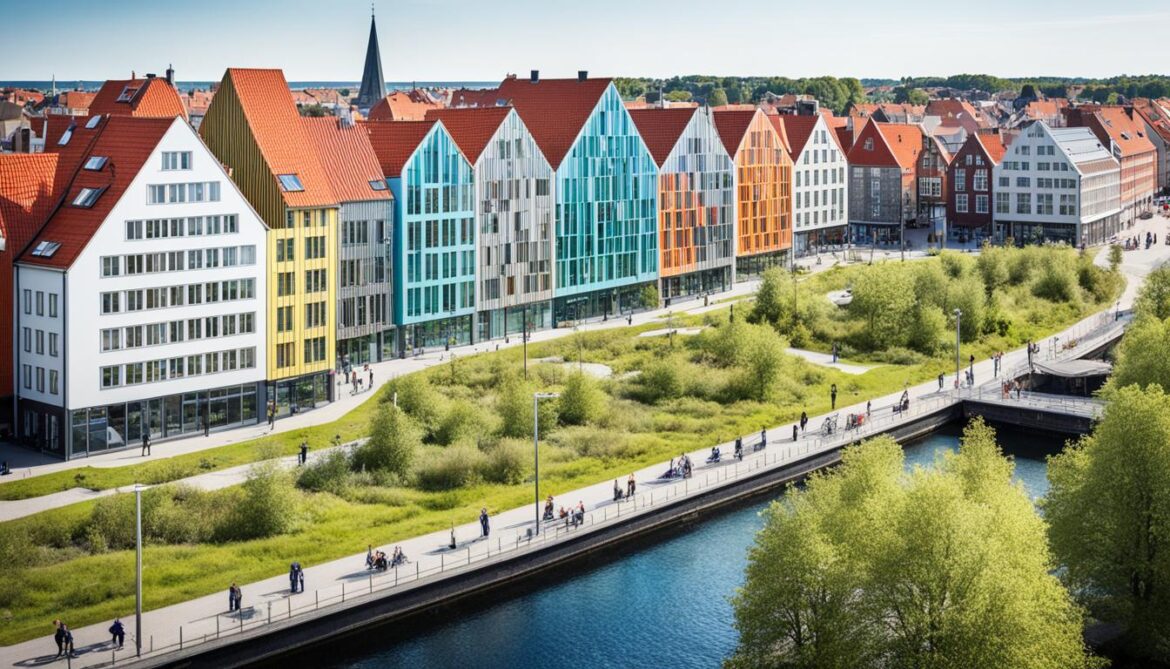
Conditions for Practical Implementation
Practical implementation of sustainable practices in the built environment requires several key conditions to be met. These include:
- Training and Capacity-building: To enhance their knowledge and skills, stakeholders involved in the built environment need access to comprehensive training and capacity-building initiatives. This will help them understand and implement sustainable practices effectively.
- Environmental Considerations in Regulations: Building regulations and guidelines should prioritize environmental considerations. By incorporating sustainable practices into the design and construction process, these regulations can ensure that environmental impacts are minimized and sustainable outcomes are achieved.
- Collaboration Among Stakeholders: Successful implementation of sustainable practices requires collaboration among all stakeholders, including developers, architects, and policymakers. By working together, they can pool their expertise and resources to address the unique challenges of the built environment.
By meeting these conditions, practical implementation of sustainable practices can be achieved in the built environment, leading to a more environmentally-friendly and socially responsible approach to urban development.
“The future of the built environment relies on the practical implementation of sustainable practices, which can only be achieved through collaboration and environmental considerations.”
Benefits of Practical Implementation
| Benefits | Description |
|---|---|
| Environmental Sustainability | By implementing sustainable practices, the built environment can reduce its environmental footprint and contribute towards a greener future. |
| Social Responsibility | Practical implementation ensures that the built environment meets the needs of communities while preserving and enhancing their quality of life. |
| Economic Efficiency | Sustainable practices in the built environment lead to cost savings, improved resource management, and long-term economic benefits. |
| Resilience to Climate Change | By considering environmental considerations, the built environment can be better prepared to withstand and adapt to the challenges of climate change. |
Conclusion
Denmark recognizes the importance of conserving biodiversity and implementing sustainable practices in urban planning and the built environment. The country has taken significant steps to protect biodiversity, establish protected areas, and promote environmental education. However, it is crucial to address the declining trend in biodiversity and redesign the governance of the built environment to achieve long-term sustainability.
By adopting innovative theories such as the circular economy, absolute sustainability, or doughnut economy, Denmark can embrace a more environmentally-friendly and wildlife-friendly approach to urban development. It is essential to involve all stakeholders, including developers, architects, and policymakers, in this process to ensure practical implementation and successful outcomes.
The realization of a biodiversity-rich and sustainable built environment requires a collaborative effort from all parties involved. Through effective planning, policy-making, and the integration of sustainable practices, Denmark can create a future where conservation and urban development coexist harmoniously. With a focus on the preservation of natural habitats, the promotion of ecological sustainability, and the enhancement of green infrastructure, Denmark can lead the way towards a more sustainable and biodiverse future.





